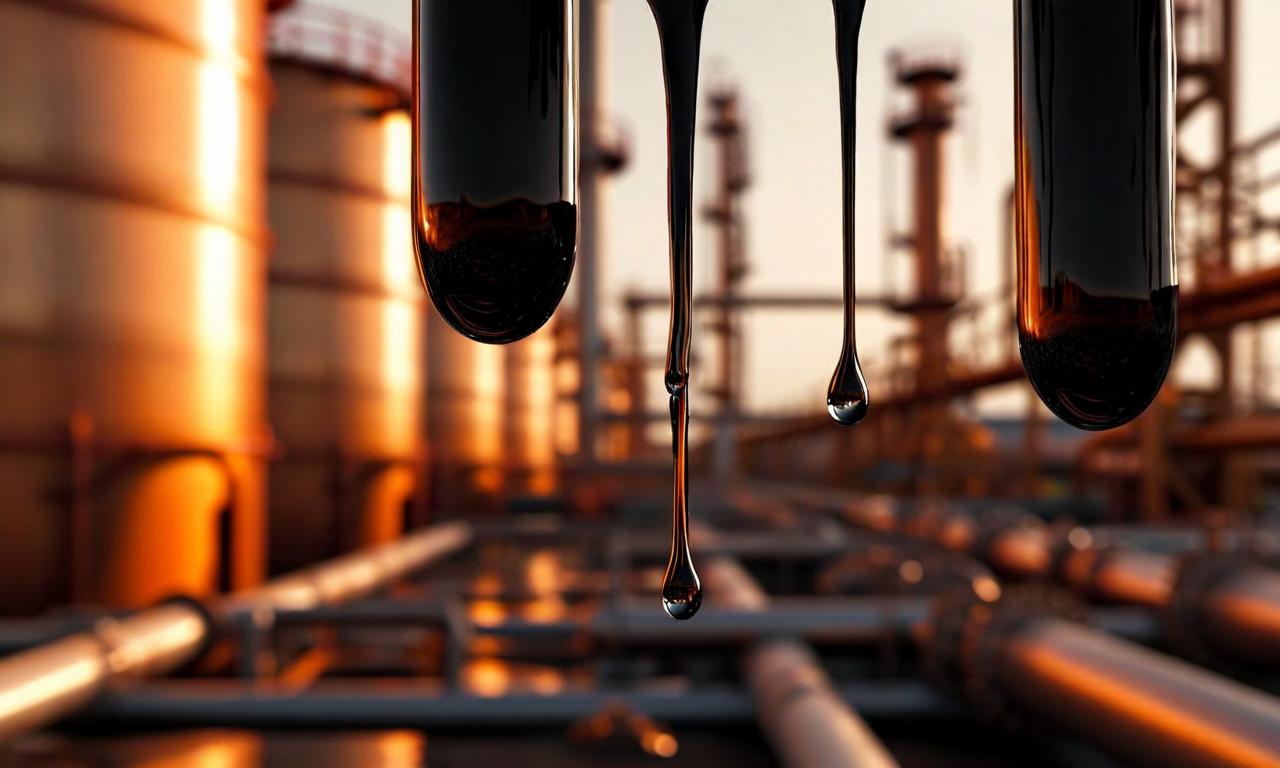India's Crude Oil Imports from US Set to Surge, Russian Oil Purchases Under Scrutiny
India's crude oil imports from the US have increased significantly, with Q1 imports rising 114% year-on-year to $3.70 billion. The US share in India's crude import basket doubled from 3% to 8% in July. LNG imports from the US also doubled to $2.40 billion. This trend could be affected by potential changes in India's Russian oil imports, which are crucial for global price stability. The US has imposed 25% reciprocal tariffs on India, and bilateral trade negotiations are ongoing.

*this image is generated using AI for illustrative purposes only.
India's energy landscape is undergoing a significant shift as crude oil imports from the United States are projected to increase substantially, signaling a strengthening of energy trade relations between the two nations. However, this trend could be further impacted by potential changes in India's Russian oil imports.
Sharp Rise in Q1 Imports
The first quarter has already witnessed a substantial jump in Indian crude oil imports from the US. The value of these imports surged by 114% year-on-year, reaching $3.70 billion compared to $1.73 billion in the same period of the previous year. This dramatic increase underscores the growing importance of US crude in India's energy mix.
Increasing US Share in India's Crude Import Basket
The United States is gaining a larger foothold in India's crude oil import portfolio. In July, the US share in India's crude import basket more than doubled, rising from 3% to 8%. This shift indicates a diversification of India's oil sources and a stronger reliance on US supplies.
Volume Increase in Crude Imports
The volume of crude oil imports from the US has also seen a significant uptick. Between January and June, India's crude imports from the US averaged 0.271 million barrels per day (mb/day), a notable increase from 0.18 mb/day during the corresponding period in the previous year.
LNG Imports Double
The strengthening energy trade is not limited to crude oil. India's imports of Liquefied Natural Gas (LNG) from the US have also shown remarkable growth. LNG imports doubled from $1.40 billion to $2.40 billion, further cementing the energy partnership between India and the United States.
Potential Impact of Russian Oil Imports
Sources indicate that crude oil prices could harden if India stops purchasing Russian oil, as India's imports are critical for maintaining price stability. India currently imports nearly 2 million barrels per day out of Russia's 4.5 million barrels per day exports, with Russia producing 9.5 million barrels per day, representing 10% of global oil demand.
US-India Trade Relations
The US imposed 25% reciprocal tariffs on India effective August 1, though additional penalties threatened by President Trump for doing business with Russia remain unclear. India and the US have been negotiating a bilateral trade agreement, with teams concluding their fifth round of talks in Washington.
Market Implications
Brent crude had spiked to $137 in March 2022 due to fears of Russian oil leaving the market after the Ukraine conflict, but India's increased Russian oil imports helped stabilize prices. Recent comments by Trump suggest that India may consider halting Russian oil purchases, which he called a good step, though he expressed uncertainty about the development.
Implications for India-US Energy Trade
This surge in crude oil and LNG imports from the US reflects a broader trend of strengthening energy trade relations between India and the United States. As India continues to diversify its energy sources and meet its growing energy demands, the US is emerging as a key partner in this sector.
The projected increase in crude oil imports suggests that this trend is likely to continue, potentially reshaping the dynamics of India's energy import strategy in the coming years.
| Import Category | FY24 Value | FY25 Value | Year-on-Year Increase |
|---|---|---|---|
| Q1 Crude Oil | $1.73 bn | $3.70 bn | 114.00% |
| Annual LNG | $1.40 bn | $2.40 bn | 71.40% |
As India's energy needs continue to grow, the increasing imports from the US could play a crucial role in ensuring energy security and diversifying supply sources. This evolving partnership may also have broader implications for global energy markets and geopolitical relationships in the region, especially in light of potential changes in India's Russian oil imports.

























